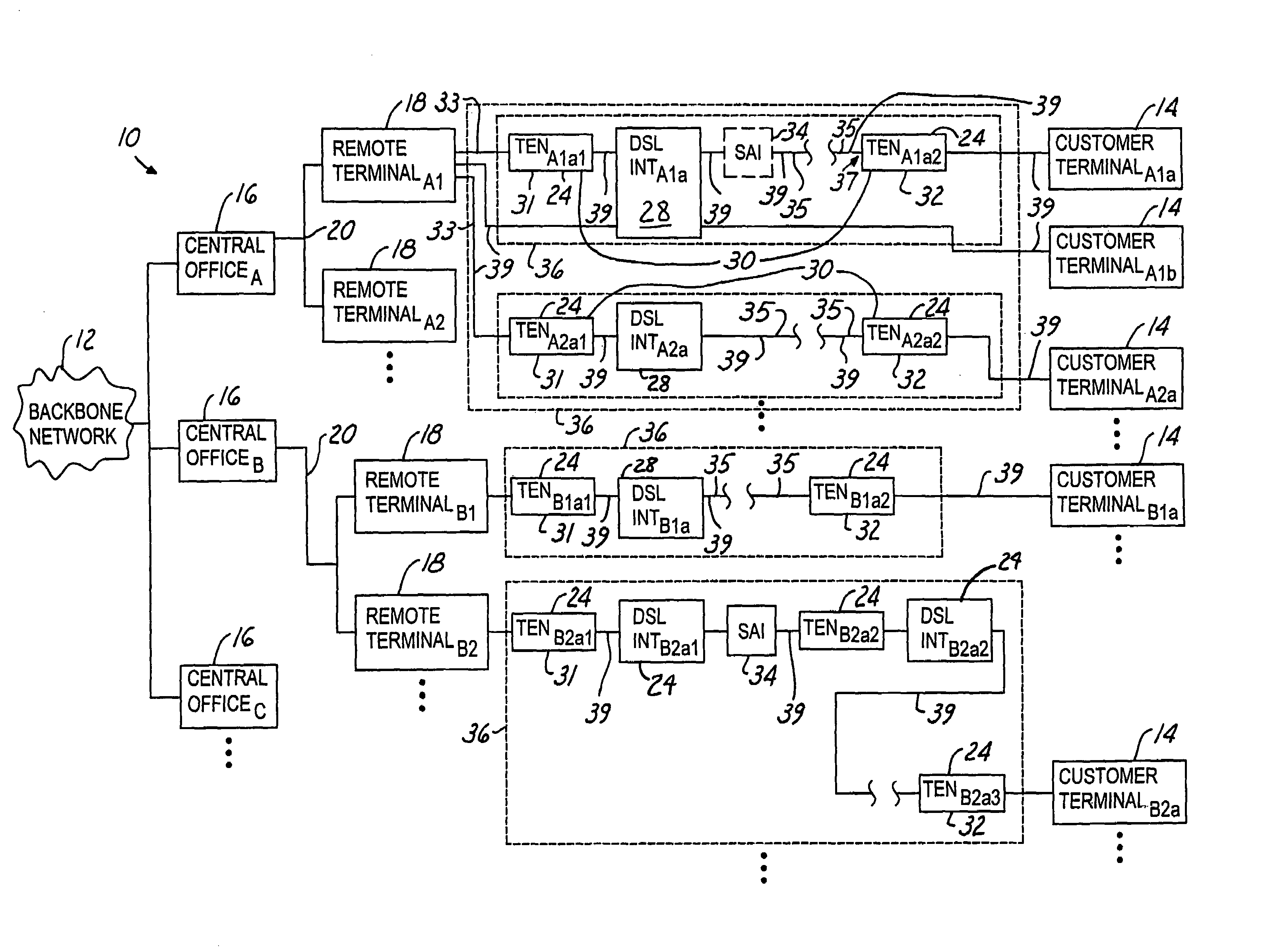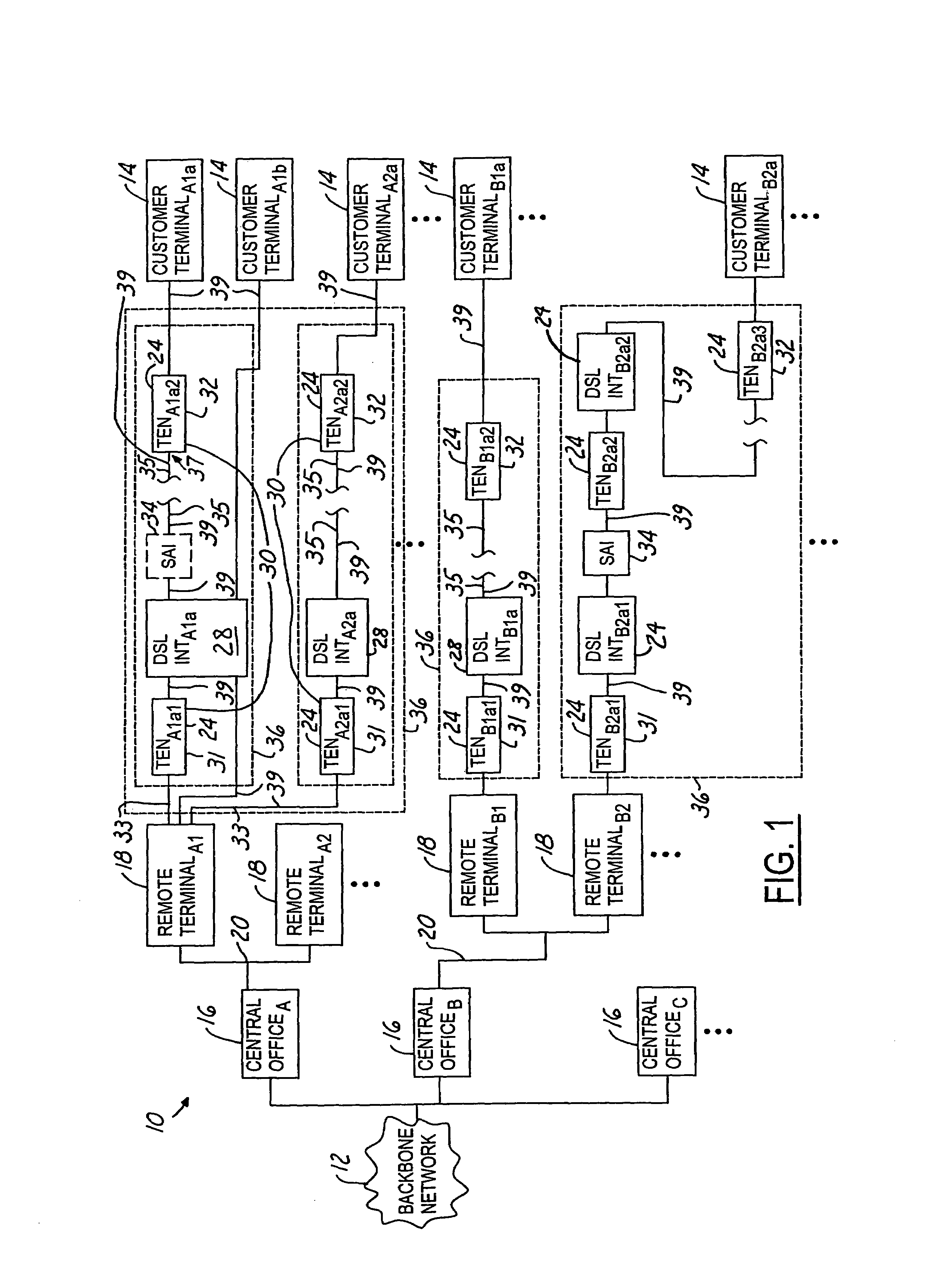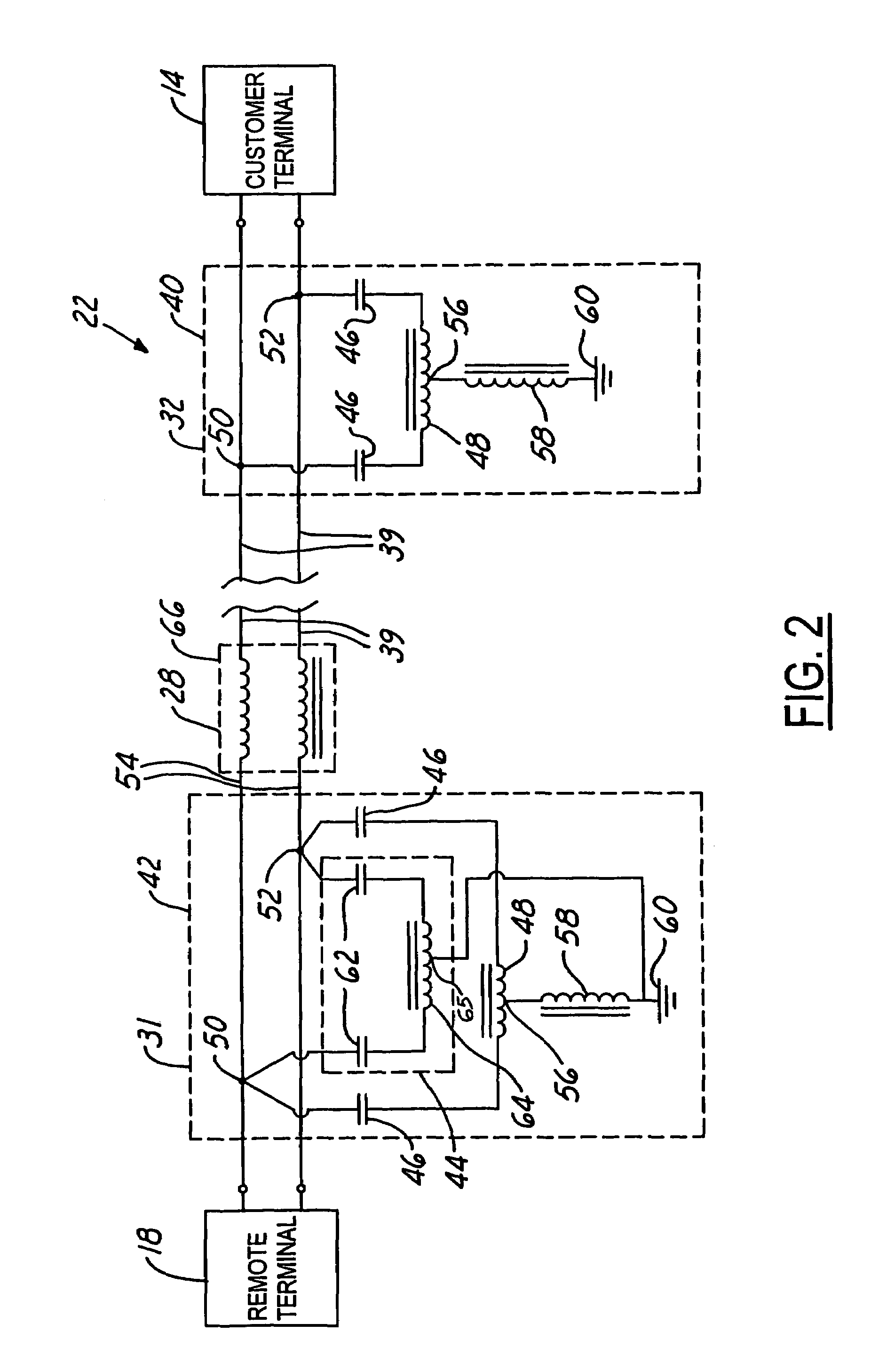Digital subscriber line induction neutralizing transformer network
a transformer network and digital subscriber technology, applied in the field of data transmission systems, can solve the problems of service reliability, high prevalence of problems, and the primary line protector does not protect against induced voltages less than 300 volts
- Summary
- Abstract
- Description
- Claims
- Application Information
AI Technical Summary
Problems solved by technology
Method used
Image
Examples
Embodiment Construction
[0017]In each of the following figures, the same reference numerals are used to refer to the same components. While the present invention is described with respect to a digital subscriber line (DSL) induction neutralizing transformer (INT) and a DSL INT network including the DSL INT therein for use in a telecommunication system, the present invention may be adapted to be used in various communication systems including: telecommunication systems, DSL systems, high-speed data transmission systems, or other communication systems.
[0018]In the following description, various operating parameters and components are described for one constructed embodiment. These specific parameters and components are included as examples and are not meant to be limiting.
[0019]Also, in the following description the terms “telecommunication line” refer to any telecommunication signal path medium. Telecommunication line may refer to various telecommunication cables such as fiber optic cable or copper twisted ...
PUM
 Login to View More
Login to View More Abstract
Description
Claims
Application Information
 Login to View More
Login to View More - R&D
- Intellectual Property
- Life Sciences
- Materials
- Tech Scout
- Unparalleled Data Quality
- Higher Quality Content
- 60% Fewer Hallucinations
Browse by: Latest US Patents, China's latest patents, Technical Efficacy Thesaurus, Application Domain, Technology Topic, Popular Technical Reports.
© 2025 PatSnap. All rights reserved.Legal|Privacy policy|Modern Slavery Act Transparency Statement|Sitemap|About US| Contact US: help@patsnap.com



